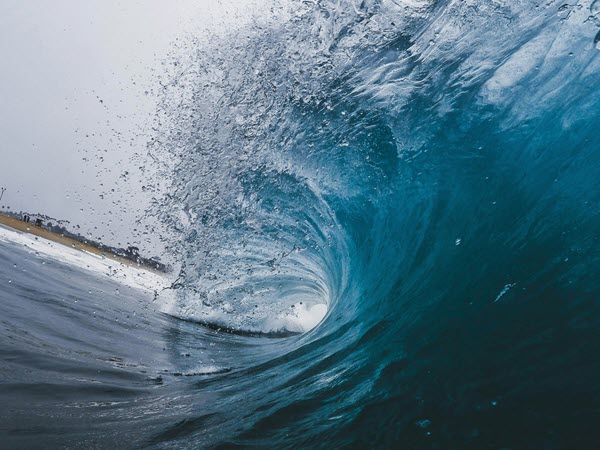First Take on the 2024 Forrester Email Marketing Services Providers Wave™
The 2024 Forrester Email Service Provider (ESP) Wave™ finally dropped today, August 5, and as usual, it’s filled with a mix of great insights, missing vendors, and “what were they thinking?” conclusions. As most of you know, for the last 9 years, my business has exclusively focused on helping enterprise brands navigate the ESP Request for Proposal (RFP) process, so I am very familiar the ESP landscape at an enterprise level along with the strengths and weaknesses of the various players.
Now, it’s fair to say that the way Forrester and I see things are not always aligned. We approach the landscape in different ways, so while I provide commentary, it’s not that Forrester is wrong. It’s that from my own experience of seeing vendors pitch and how my clients react, I often have a different perspective.
With that in mind, let’s take a look at the results.
What Forrester got Right
Zeta is certainly deserving of landing in the top position in the “Leaders” category. The Zeta Marketing Platform (ZMP) is an excellent platform and Zeta has landed some significant new clients with it since the last Wave came out 2 years ago.
Braze and Cordial are deserving of their positions as “Strong Performers,” though I could argue that one or both should have landed in the “Leaders” category. This is based on my experience with them, and on Forrester’s own criteria of making all types of data immediately usable, innovation, and use of AI.
Regarding the placement of Salesforce and Epsilon near the bottom of the pack in the “Contenders” category, this aligns with both my personal experience and the opinions of my clients. Both platforms are legacy technology, and there’s only so much either can do to stay competitive with the next generation (nextgen) platforms like Zeta and Braze.
Missing from the report for reasons that are unclear is Oracle. It can’t be because they didn’t participate; neither did Salesforce or Epsilon. I would expect they would have landed very close to both of them had they been included.
Where I Diverge from Forrester
Let me state for the record that I respect both Bloomreach and Optimove. Both are good platforms in their own right and do what they do very well. That being said, their inclusion in this report does not seem to align to the market. Bloomreach started life as a customer experience platform, and only entered the email game in January 2021 with its acquisition of Exponea, a Slovakian-based ESP. While a good platform, it was not ready then to play in the US enterprise email market. Nor is it today.
Historically, some brands have used the Wave to pick who they include in an RFP, and Forrester knows that. They do a disservice to brands when they imply that including Bloomreach in an enterprise RFP against Zeta, Cordial, and Braze would make sense. The same goes for Optimove. It’s a very good platform, but it’s first and foremost a CDP. I would never include them in an ESP RFP, no matter how good they are at what they do.
Lastly, neither Marigold nor Iterable belong in the “Contenders” category. We’ve seen Iterable in several recent RFPs and they compare very favorably with Braze and Cordial.
As for Marigold, it’s the new name for the CM Group. Marigold owns and operates a number of platforms including the formerly named Cheetah, Selligent, Sailthru, and Campaign Monitor. They’re one of the few companies that have used a consolidation play and actually done a great job at it. The platform used in this evaluation was Engage+, which is the current name for the Cheetah platform. Based on their RFP performance with us the last couple of years they, like Iterable, should be in the “Strong Performers” category. Because in the real world, that’s where they sit.
The Changing of the Guard
I first started talking and writing about a changing of the guard in the ESP vendor landscape back in 2021. Based on my discussions at that time with brands and their vendor wish list going into RFPs it was becoming clear to me that the relatively newer “next gen” ESPs were more and more being seen as leading in innovation and new features and functionality.
At the same time, there was a growing perception that innovation had stalled or stopped at the legacy marketing clouds who were starting to sound and look the same. In the 2022 Forrester ESP Wave, the results finally began to reflect what I was seeing in the real world, and now in 2024 the Wave does a good job reflecting this trend.
One of the key factors driving the changing of the guard is a switch from ESPs built on relational databases to nextgen platforms on NoSQL databases. For an explanation of the differences, read this And in this Wave, every one of the vendors in the top two categories is a nextgen platform built on a NoSQL database (Netcore is a bit of a hybrid—have them explain it to you!). That’s not by accident, that’s where the market is going.
Conclusion
As I wrote at the beginning, there are a lot of great insights in this Wave, but it isn’t perfect. You would be doing yourself a disservice if it was your sole guide on who to include in an ESP RFP. But you’d also be wrong to ignore it completely as you consider your RFP line-up.
And for those brands who are still mailing through one of the legacy platforms that underperformed in this Wave, you need to face up to your fear of making a change and all of the time and effort that comes with it. You’re reaching the point where the risk of staying on your platform is greater than any inherent risks in changing vendors.
 Photo by Jeremy Bishop on Unsplash
Photo by Jeremy Bishop on Unsplash

 How to resolve AdBlock issue?
How to resolve AdBlock issue? 
